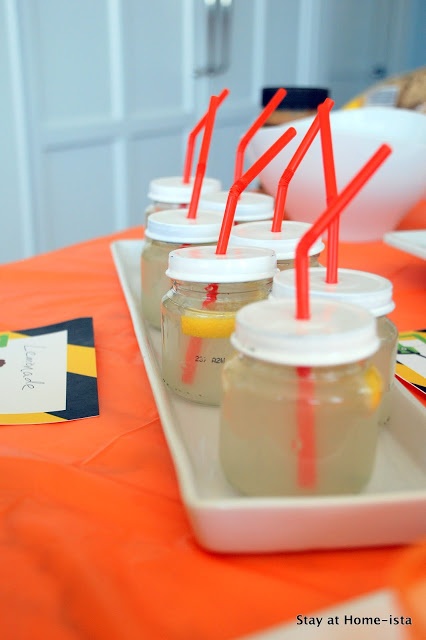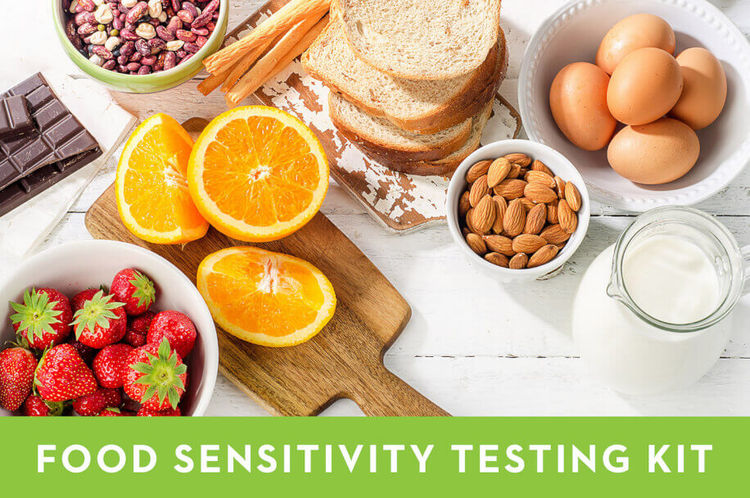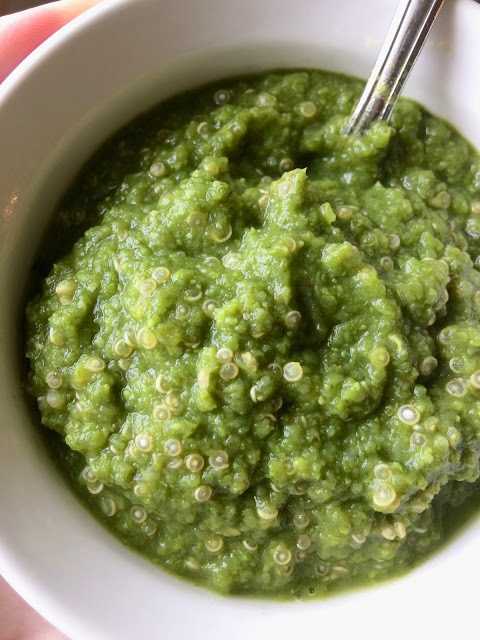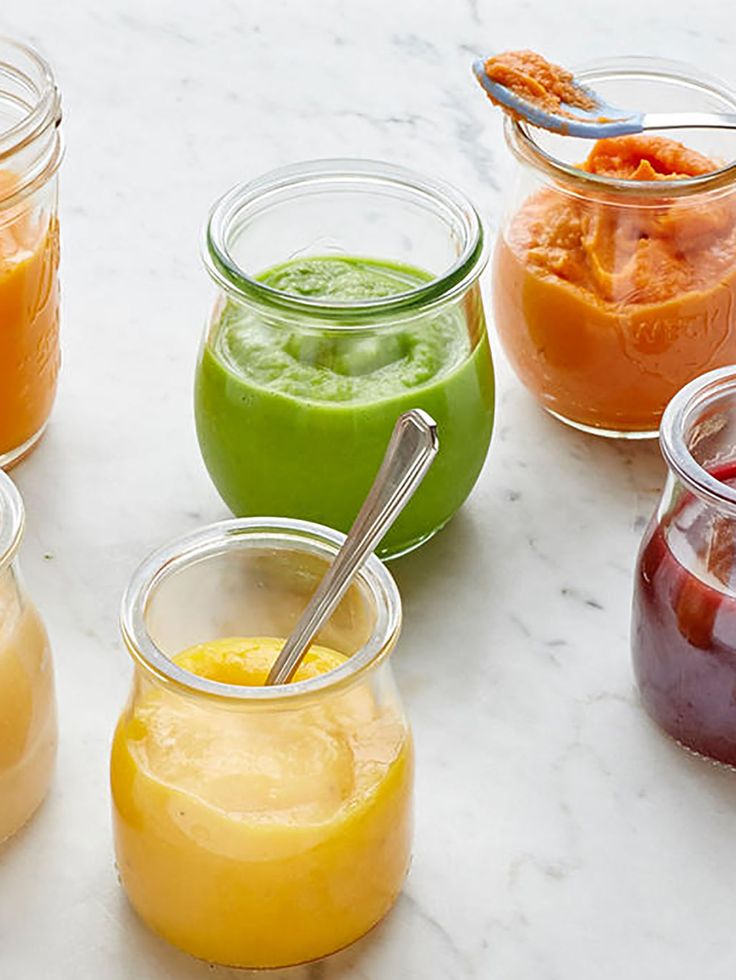Feeding baby rice cereal in bottle
Should I Add Rice Cereal to My Baby's Bottle?
Sleep: It’s something babies do inconsistently and something most parents are lacking. That’s why grandmother’s advice to put rice cereal in a baby’s bottle sounds so tempting — especially to an exhausted parent searching for a magic solution to get baby to sleep through the night.
Unfortunately, even adding a tiny amount of rice cereal to a bottle can cause short- and long-term problems. It’s also why the experts, including the American Academy of Pediatrics (AAP), recommend against the practice of adding rice cereal to a bottle.
Adding rice cereal to baby’s evening bottle is a common practice by many parents who want to fill their baby’s belly in the hopes it will help them sleep more. But the AAP, along with other feeding experts, recommend against this practice, especially as it relates to the issue of improving infant sleep patterns.
Gina Posner, MD, a pediatrician at MemorialCare Orange Coast Medical Center in Fountain Valley, California, says one of the biggest problems she sees with adding rice cereal to a bottle is weight gain.
“Formula and breast milk have a certain amount of calories per ounce, and if you start adding rice cereal, you significantly increase those calories,” she explains.
Adding cereal to bottles can also be a choking hazard and an aspiration risk, says Florencia Segura, MD, FAAP, a pediatrician in Vienna, Virginia, especially if an infant does not have the oral motor skills yet to swallow the mixture safely. Adding cereal to bottles may also delay the opportunity to learn to eat from a spoon.
Additionally, adding rice cereal to a bottle may cause constipation as a result of a change in stool consistency.
Despite what you may have heard, adding rice cereal to your baby’s bottle is not the answer to better sleep.
The Centers for Disease Control and Prevention (CDC) and the AAP say not only is there no validity to this claim, but doing so could also increase your baby’s risk of choking, among other things.
“Rice cereal will not necessarily help your baby sleep longer, as older studies have demonstrated,” says Segura.
More importantly, she says good sleep always starts with a bedtime routine as early as 2 to 4 months of age, which will help your child get ready for rest, especially once they start to associate the routine with sleep.
If your baby has reflux, your doctor may talk to you about adding a thickening agent to a bottle of formula or breast milk. The idea is that doing so will make the milk sit heavier in the belly. Many parents turn to rice cereal to make their baby’s food thicker.
A 2015 review of literature published in American Family Physician reported that adding thickening agents such as rice cereal do indeed reduce the amount of observed regurgitation, but also pointed out that this practice can lead to excess weight gain.
The article also noted that for formula-fed babies, offering smaller or more frequent feeds should be the first method parents should try to reduce reflux episodes.
Segura says adding rice cereal to a bottle should only be used when medically indicated for gastroesophageal reflux disease (GERD). “A trial of thickening feeds for infants with severe reflux or children diagnosed with a swallowing dysfunction can be safe but should be recommended and supervised by your medical provider,” she explains.
“A trial of thickening feeds for infants with severe reflux or children diagnosed with a swallowing dysfunction can be safe but should be recommended and supervised by your medical provider,” she explains.
Additionally, the AAP recently changed their stance from recommending rice cereal to thicken feeds when medically necessary to using oatmeal instead, since rice cereal was found to have arsenic.
While rice (including rice cereals, sweeteners, and rice milk) can have higher levels of arsenic than other grains, it can still be one part of a diet that contains a variety of other foods
Although it may help with GERD, Posner says that, due to the increase in calories, she does not recommend it. “There are special formulas out there that use rice cereal to thicken them, but still maintain the correct calorie ratio, so those are a more effective option,” she explains.
Many parents look forward to the day they can spoon-feed cereal to their baby. Not only is it a major milestone, but it’s also fun to watch their reaction as they take their first bites of solid food.
However, since a baby’s motor skills and digestive system need to mature before they are ready to process cereal and other foods, this stage of your baby’s development should not take place before 6 months of age, according to the AAP.
When your baby is about 6 months old, has control of their neck and head, can sit in a high chair, and they are showing interest in solid food (aka your food), you can talk to your doctor about introducing solid foods such as rice cereal.
The AAP says there’s no right food to start with as baby’s first food. Some doctors may suggest pureed vegetables or fruits.
Traditionally, families have offered single-grain cereals, such as rice cereal, first. If you start with cereal, you can mix it with formula, breast milk, or water. By the time solid food is being given more than once per day, your baby should be eating a variety of foods other than grain cereals.
As you move the spoon towards your baby’s mouth, talk them through what you are doing, and pay attention to how they move the cereal once it’s in their mouth.
If they push out the food or it dribbles down their chin, they may not be ready. You might try diluting the cereal even more and offering it a couple more times before deciding to hold off for a week or two.
The AAP, CDC, and many experts agree that adding rice cereal to your baby’s bottle is risky and offers little to no benefit.
Creating a healthy sleep routine for your baby will help them get more hours of rest and allow you to get more sleep too. But adding rice cereal to their bottle should not be a part of this routine.
If your baby has gastroesophageal reflux disease (GERD) or other swallowing issues, talk with your pediatrician. They can help you strategize a method to manage the reflux and bring your baby relief.
Remember: Even though your baby may be struggling with sleep right now, they will eventually grow out of this phase. Hang in there a little longer, and your baby will grow out of it before you know it.
Putting Rice Cereal in Your Baby’s Bottle: Is It Safe?
Written by WebMD Editorial Contributors
Reviewed by Dan Brennan, MD on March 02, 2021
In this Article
- Solid Foods for Babies
- Is Rice Cereal Safe to Put in a Baby’s Bottle?
- Arsenic in Rice Cereal
- How to Feed Your Baby Cereal
- Other Supplementary Baby Foods
During their first 6 months, most babies’ diets consist of mostly breast milk or baby formula. Sometime between 4 and 6 months, you may decide to start supplementing your baby’s diet with solid foods. Most babies’ digestive systems aren’t ready to process anything but milk or formula prior to 4 months of age, at the very earliest.
Sometime between 4 and 6 months, you may decide to start supplementing your baby’s diet with solid foods. Most babies’ digestive systems aren’t ready to process anything but milk or formula prior to 4 months of age, at the very earliest.
For years, many new parents have started their babies out on solid foods by adding rice cereal to their baby’s bottle. However, new research has provided several reasons why parents should avoid this method.
Solid Foods for Babies
Before the age of 4 to 6 months, babies are not yet ready to eat solid foods. It’s around this time that your baby’s digestive system can start to handle certain supplementary foods. They also usually stop using their tongues to push food around or out of their mouths.
Signs that your baby is ready to start eating solid foods as a supplement to breast milk or formula include when they:
- Can support their head steadily on their own
- Can sit upright without help
- Show interest in your food when you eat, at times moving their mouth around while watching
- Can grab at objects
Is Rice Cereal Safe to Put in a Baby’s Bottle?
Your baby’s first foods should be simple, one-ingredient foods with no added salt or sugar. For this reason, many new parents turn to cereals like rice, oatmeal, or barley.
For this reason, many new parents turn to cereals like rice, oatmeal, or barley.
It was once thought that adding rice cereal to a baby’s bottle at night would help them sleep longer without waking up to feed during the night. Recent studies now show that there is no reason to believe that this is true.
Babies usually can’t sleep more than 5 hours at a time at this stage. They also naturally wake up to feed, whether or not they are full. Not only does adding rice cereal to a baby’s bottle not keep them asleep, but it can also raise their risk of choking.
Adding rice cereal to your baby’s bottle makes the liquid thicker. Babies who get used to drinking thick milk like this might later develop a difficulty telling solid foods apart from liquid foods. This can make it hard for your baby to start eating solid foods.
Arsenic in Rice Cereal
Another risk associated with putting rice cereal in a baby’s bottle is that rice has higher levels of arsenic in it as compared to other cereals and grains.
Arsenic is a naturally-occurring substance in soil, water, and air. Rice that grows with trace amounts of arsenic in it can have lasting effects on your baby’s health.
Arsenic is a carcinogen that is linked to several different diseases. Even low levels, like those found in rice cereals for babies, can affect their development. Instead, the American Academy of Pediatrics (AAP) now recommends that you introduce oatmeal to your baby instead.
How to Feed Your Baby Cereal
No matter which cereal you decide to give your baby when introducing solid foods, you should never put it directly into the bottle for the reasons mentioned. Instead, you can feed cereal to your baby with a small baby spoon.
To do so, mix 1 tablespoon of single-ingredient, iron-fortified cereal with 4 tablespoons of baby formula or breast milk. Once your baby is sitting upright, offer them about a teaspoon of the cereal. This kind of feeding takes practice, so it might get messy. As your baby learns to swallow and manage the cereal, you can increase the thickness over time.
If your baby enjoys the food, try giving them a little more. If they aren’t interested or don’t like it, don’t force it. You can try it again in a few days.
Other Supplementary Baby Foods
It’s important not to introduce solid foods, like cereal or others, to your baby before they’re ready. Introducing your baby to cereal too early is linked to obesity later on in their life. There is also a higher risk of allergy activation, especially with cereals that contain gluten.
When introducing a new food to your baby, wait a few days to see if they develop symptoms of allergies or diarrhea before introducing another new food. Doctors recommend giving your baby foods with potential allergens when you start giving them supplemental foods. It’s a myth that waiting to introduce foods like peanuts, fish, or eggs can prevent food allergies.
Once your baby has mastered eating cereal, try giving them pureed fruit or veggies with no added ingredients. Only give them one kind of fruit or vegetable at a time. You can also try giving your baby pureed meat. Wait 5 days after introducing each food to check for a reaction.
You can also try giving your baby pureed meat. Wait 5 days after introducing each food to check for a reaction.
how to cook rice for feeding
Contents: Hide
One of the first "adult" dishes on the baby's table is rice. This cereal has earned the trust of nutritionists, pediatricians and parents around the world. Rice is a gluten-free, low-allergenic cereal with a high content of "healthy" carbohydrates (up to 85%), which are perfectly digested in the baby's sensitive digestive tract. Rice is also traditionally used in the therapeutic diets of people with diseases of the gastrointestinal tract, obesity, diabetes, metabolic syndrome and intestinal infections.
Main useful properties
The main properties of rice porridge are its low calorie content (44 kcal per 100 g of product) and the optimal ratio of proteins, fats and carbohydrates.![]() Rice has a low glycemic index, which contributes to a more efficient supply of glucose to the brain. Protein in rice contains a small amount, but due to its structure, it is perfectly absorbed by the human body (up to 98%). In the fat component of rice, 1/5 part (21%) belongs to fatty acids important for the child's body: oleic (37%), linoleic (41%) and linolenic. The low fat content in rice groats (0.7–1 g/100 g of groats), the optimal ratio of proteins, fats and carbohydrates (7 g/1 g/74 g) create a long-lasting feeling of fullness when eating ready-made rice dishes. Since rice does not contain coarse dietary fiber, it can be used in the diet of people with diseases of the digestive system, accompanied by excessive motility and gas formation. The vitamin and mineral composition of rice cereal is not as rich as compared to buckwheat or oatmeal. However, rice grains contain a large amount of B vitamins, of which the most are pyridoxine (vitamin B6) and tocopherol (vitamin E).
Rice has a low glycemic index, which contributes to a more efficient supply of glucose to the brain. Protein in rice contains a small amount, but due to its structure, it is perfectly absorbed by the human body (up to 98%). In the fat component of rice, 1/5 part (21%) belongs to fatty acids important for the child's body: oleic (37%), linoleic (41%) and linolenic. The low fat content in rice groats (0.7–1 g/100 g of groats), the optimal ratio of proteins, fats and carbohydrates (7 g/1 g/74 g) create a long-lasting feeling of fullness when eating ready-made rice dishes. Since rice does not contain coarse dietary fiber, it can be used in the diet of people with diseases of the digestive system, accompanied by excessive motility and gas formation. The vitamin and mineral composition of rice cereal is not as rich as compared to buckwheat or oatmeal. However, rice grains contain a large amount of B vitamins, of which the most are pyridoxine (vitamin B6) and tocopherol (vitamin E).
Rice dishes occupy one of the leading positions in the world gastronomic culture.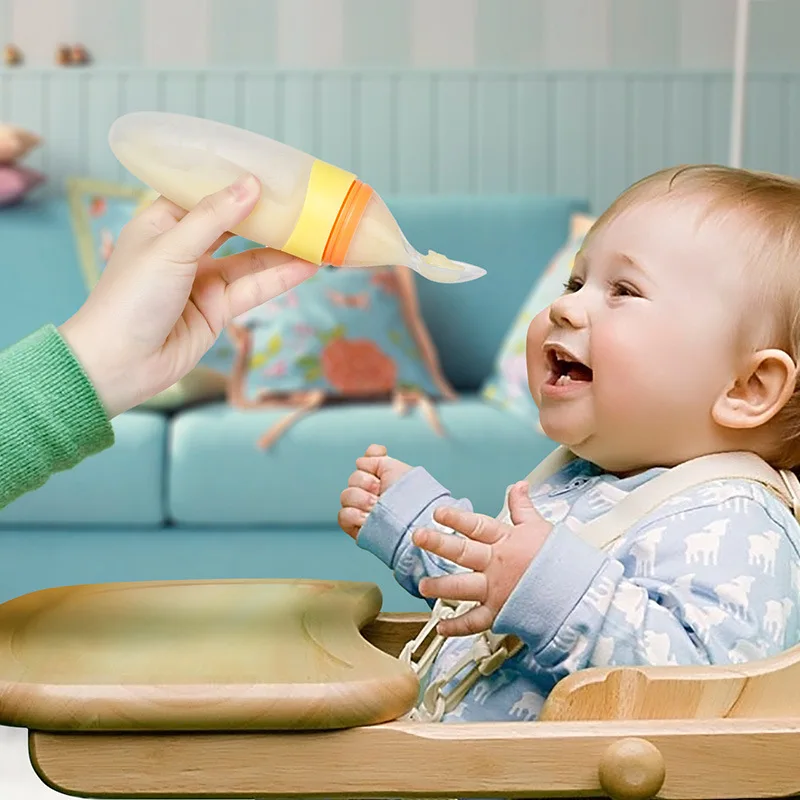 About 5000 recipes based on this cereal are known. Therefore, in baby food, rice porridge does not lose its popularity.
About 5000 recipes based on this cereal are known. Therefore, in baby food, rice porridge does not lose its popularity.
For breakfast in Russia, porridge is traditionally prepared for children, because the first meal should be high-calorie, satisfying and tasty. The main components of a healthy breakfast should be complex carbohydrates, proteins and fats of animal origin, which take longer to be processed by digestive enzymes. Therefore, the choice of parents in favor of porridge as the main dish in the morning is quite justified.
Rice porridge for feeding children in the first year of life
Children's rice porridge is one of the most popular products in the Baby Premium line. Small gourmets can choose from dairy-free and milky rice porridges, with fruit additives. All cereals of the Baby Premium line have a high safety profile, are enriched with essential vitamins and minerals, which increases their nutritional value.
The use of fortified baby foods is an important part of nutrition in the first year of life.![]() During the transition of a child from exclusive breastfeeding to the stage of introduction of complementary foods, short-term deficiency states for individual microelements may occur.
During the transition of a child from exclusive breastfeeding to the stage of introduction of complementary foods, short-term deficiency states for individual microelements may occur.
Lack of proper eating habits in the family, encouragement of the child's independent choice of foods, selectivity in nutrition, restrictive diets are factors that lead to a deficiency of vitamins and minerals in the baby's diet.
In this regard, health professionals have developed a global strategy to reduce the risk of developing vitamin and mineral deficiencies - the mandatory fortification of daily food, especially regarding the children's menu.
Thus, it has been proven that no additional non-fortified food can provide the infant with an adequate level of zinc, the deficiency of which causes a decrease in growth rate, intestinal diseases and a decrease in immune tolerance. Accordingly, the child should receive additional zinc with enriched complementary foods.
The same risk factors include a high prevalence of iron deficiency in children of the 1st year of life due to poor control of maternal nutrition during pregnancy and lactation, obsession with diets, premature birth and the development of digestive disorders in the infant in the first months of life. Iron deficiency can cause delayed psychomotor development and other health problems in the baby. With the right balance of trace elements in the diet of both the mother and the baby, this condition can be avoided.
Iron deficiency can cause delayed psychomotor development and other health problems in the baby. With the right balance of trace elements in the diet of both the mother and the baby, this condition can be avoided.
Baby Premium baby cereals contain all the necessary vitamins and minerals, but the content of such elements as iron, iodine, zinc, B, A, C vitamins is especially high, which cover up to 10% of the daily requirement for these substances.
The first complementary foods with rice porridge for children
Each parent can offer children's rice porridge for breakfast. For healthy babies, complementary foods at 4-6 months can be started with safe, low-allergenic Baby Premium rice porridge and gradually move to milk-based rice porridge, which has a high nutritional value due to the ideal combination of animal proteins and cereals, as well as the additional introduction of vitamins and minerals . In terms of calories, milk porridges are comparable to breast milk (90 kcal and 70 kcal, respectively), in this regard, they perfectly maintain a long-term feeling of satiety and give a stable supply of energy to the little hero.
If it is necessary to make a more varied diet and introduce the child to new tastes in the Baby Premium line, you can choose milk rice porridge with fruits. Fruit additives in cereals are additional sources of dietary fiber, vitamins, minerals, and also develop the taste buds of a little gourmet.
If a child has health problems in the form of food allergies, malabsorption syndrome, celiac disease, then he can be recommended for a long time low-allergenic rice porridge, which is also a full-fledged dairy-free cereal dish. The ratio of the main nutrients, the content of vitamins and minerals in it correspond to all physiological norms of consumption in early childhood. Dairy-free rice porridge is enriched with prebiotics in the form of inulin, which will favorably affect the formation of a healthy microbiota in the intestines.
The use of Baby Premium cereals in the daily diet of young children allows parents to be confident in the high level of technological, microbiological and chemical safety of the product, its usefulness and ease of preparation in a variety of conditions.![]()
Dietary Recommendations
1. Start introducing a new food into the diet with a tiny amount. For the first acquaintance with rice, a quarter of a teaspoon of porridge will be enough for a crumb. Every day, you can increase the serving, gradually trying to reach the amount of one serving recommended by the pediatrician.
2. It is best to offer this high-carbohydrate product to babies in the morning.
3. Postpone rice foods for a while if your baby has bloating, intestinal colic, or problems with bowel movements (constipation).
4. Having decided how to cook rice porridge for feeding, over time you can enrich the taste of the main dish by adding mashed apple, pear or squash puree to it.
5. In the Bebi Premium line, along with classic rice porridge, there are options with fruit, vegetable, and cream components. They will introduce the baby to new facets of the taste of a product already known to him a few months after the introduction of the first complementary foods.
6. Take the time to teach your child about food etiquette from an early age. Wash your hands before and after eating. If the baby is already more than 10 months old, let him try to feed himself. To do this, put a beautiful bowl in front of him and offer a spoon that will be comfortable for him to hold.
How to cook rice porridge for babies
You can go in two ways - buy a package of regular rice or choose a special ready-made baby porridge from this cereal. Let's consider both options in more detail.
Rice groats
Several varieties of the product can be found on store shelves. These are parboiled, long-grain, round-grain and medium-grain rice. For the first feeding, the last option is best. Such a product absorbs a large amount of moisture during cooking and boils well. Before you cook rice porridge for the first feeding, you need to carefully prepare the grain.
- Sort by hand to remove possible pebbles and other debris.
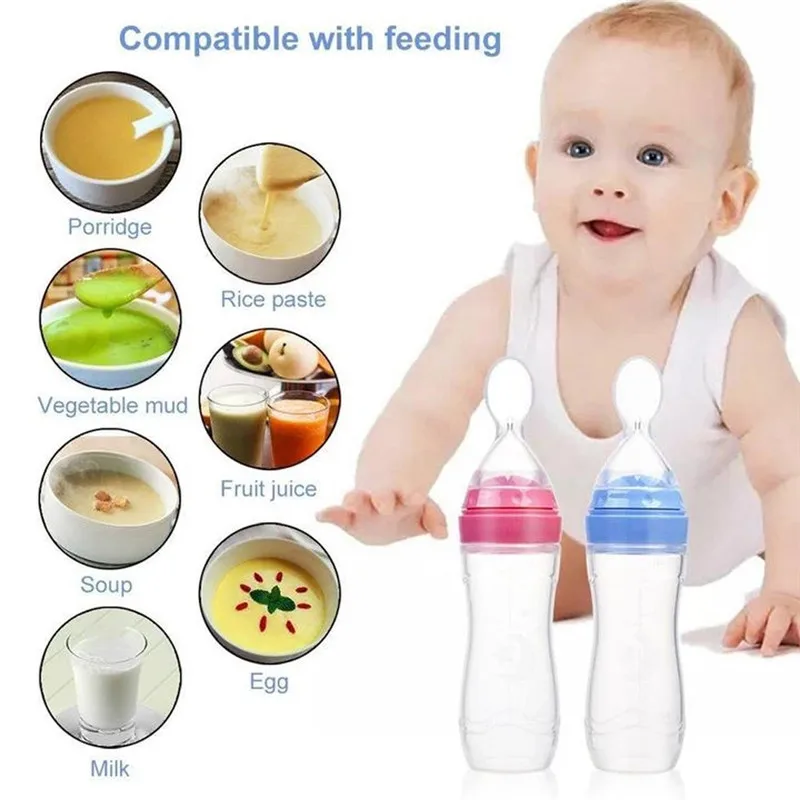
- Rinse under water until the liquid is clear.
- Soak rice in warm water, then rinse with cold water.
It is important to consider the following information:
- it is not recommended to cook cereals for children under one year old with cow's milk;
- proportions: for 20 g of rice - 50 ml of water and 100 breast milk or formula;
- for babies, do not season porridge with salt, sugar.
Ready porridge
At the first feeding, the consistency of the food should be thin and as homogeneous as possible. The presence of even small lumps in the baby can provoke regurgitation and rejection of food. Therefore, for the smallest, it is permissible to begin acquaintance with rice in the form of a ready-made powder for making porridge.
In this case, it is better to take the dairy-free version as the very first product. He leaves the mother the opportunity to prepare a dish with the addition of breast milk or a mixture - products with which the baby's body is already familiar. As a rule, a cooking recipe with exact proportions is indicated on the packaging of porridge.
As a rule, a cooking recipe with exact proportions is indicated on the packaging of porridge.
When choosing ready-made baby porridge, pay attention to the composition. The presence of dyes, soy products and some other components can cause allergies and other undesirable reactions on the part of the child's body. Bebi Premium rice porridges for the first complementary foods are distinguished by a balanced composition and are additionally enriched with a complex of prebiotics, which contribute to the formation of the correct microflora of the baby's intestines.
Important! Whichever of the options for how to cook rice porridge for the first complementary foods you choose, only a freshly prepared dish should be offered to the baby. Do not refrigerate leftovers and do not use for subsequent feedings.
Which porridge to choose for the first feeding | How to introduce porridge: how to cook, properly breed porridge for the first feeding
Your baby is growing up, getting stronger, gaining weight, and now there comes a moment when feeding only breast milk or formula is not enough for the full development of the crumbs. It's time to introduce complementary foods into your baby's diet. The question arises - where to start? Your pediatrician should answer it.
It's time to introduce complementary foods into your baby's diet. The question arises - where to start? Your pediatrician should answer it.
Today we’ll talk about how to properly introduce complementary foods with cereals. Let's talk about how to breed porridge, which one is better to choose for the first feeding, and how homemade porridge differs from store-bought.
Cereals for children up to a year
Porridge contains all the necessary set of trace elements, is perfectly absorbed, and has a beneficial effect on the digestive system.
Usually, cereals begin to be introduced into the diet of a baby at the age of six months. If the child is bottle-fed, it is permissible to start earlier, at 4-5 months. These are only approximate dates, in fact, everything is individual. It is necessary to take into account the pace of development of the child, his readiness for adult food and the tendency to allergic reactions.
Complementary foods with cereals are recommended for children who are not gaining weight well. Most likely, the baby simply does not have enough calories. In any case, before starting complementary foods, a pediatrician should be consulted. He will help you choose porridge, tell you in what quantities and how often to feed her child.
Most likely, the baby simply does not have enough calories. In any case, before starting complementary foods, a pediatrician should be consulted. He will help you choose porridge, tell you in what quantities and how often to feed her child.
It is important that the first porridge be:
- Industrial production . Not only because the raw materials are sterilized and undergo rigorous quality control. But also because at home it is difficult to achieve such a degree of grinding cereals, as cereal manufacturers do. For example, Materna porridges consist of delicate cereal flakes, which form an absolutely homogeneous mass when brewed. If desired, they can be diluted to a thick mixture and offered to the baby to drink from a bottle.
- Single component . To track down the cause of an allergic reaction if it occurs.
Dairy or non-dairy: with which cereals does the first complementary food start
Pediatricians recommend starting complementary foods with dairy-free gluten-free cereals. Gluten is a fairly heavy vegetable protein for digestion by a child's body. Its use can lead to allergies. Dairy-free cereals can be diluted with breast milk or your own milk formula to make them more nutritious and taste more familiar to the baby.
Gluten is a fairly heavy vegetable protein for digestion by a child's body. Its use can lead to allergies. Dairy-free cereals can be diluted with breast milk or your own milk formula to make them more nutritious and taste more familiar to the baby.
The first gluten-free cereals include: corn, rice and buckwheat.
How to switch from dairy-free to milk porridge
If no allergic reactions occur within 4-7 weeks from the start of complementary foods and dairy-free cereals are well absorbed, you can start offering milk cereals for children up to a year old to the baby, their energy value is much higher.
How to properly organize feeding with cereals
For the first acquaintance, you need to cook a five percent porridge, which means that for five grams of dry porridge there should be 100 mg of water. The resulting consistency will be ideal for a child who is not yet able to chew and swallow thick food.
The best time to feed is the morning meal.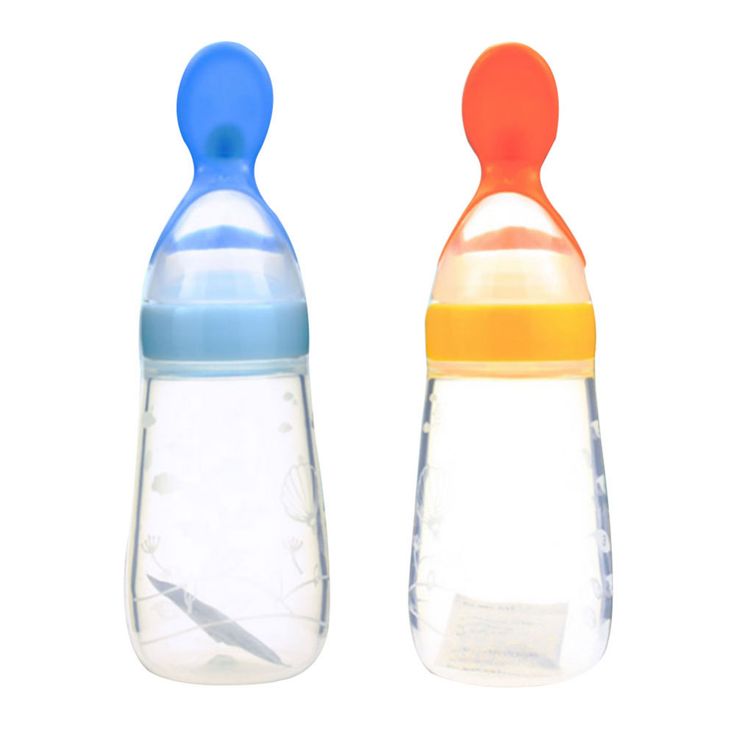 So you will have time to track the baby's reaction to a new product: if there are any allergies or stool disorders.
So you will have time to track the baby's reaction to a new product: if there are any allergies or stool disorders.
For feeding, a baby spoon made of safe material for the baby's delicate gums or a regular teaspoon is used.
As a first test, it is enough to give the child about half a tablespoon of liquid porridge. The kid should try out a new product, get used to the change in texture and taste.
Make sure the porridge is not too cold or hot, and does not contain lumps.
After porridge feeding, feed your baby his usual food - breast milk or formula.
Increase the volume of a serving of porridge only when you are sure that the baby eats it with pleasure, and he does not experience unwanted reactions.
Every day, increase the amount of porridge per spoon until the serving is 150 g for a six-month-old baby, 160-170 g for a child aged 7-8 months and 170-180 g for an age of 8-9months. Closer to the year, the serving volume will be about 200 g.![]() And the five percent porridge is replaced by a thicker, ten percent one.
And the five percent porridge is replaced by a thicker, ten percent one.
We remind you that these are only general recommendations, and the development of each child is individual and the dosage may differ from that described above. It is important not to change cereals at the beginning of complementary foods, your baby should get used to one cereal, and only after a successful debut, you can offer the next one - not earlier than in two weeks.
If you start experimenting ahead of time and give your child a different porridge every day, in case of an allergy, it will be very difficult for you to understand what exactly the child's body reacted to.
The child does not eat porridge
Toddlers refuse porridge for various reasons.
- Don't like the taste or texture.
It happens that children who started complementary foods with fruits and vegetables do not eat porridge, because their taste is very different and not so bright. Try adding an already familiar apple or broccoli to a new porridge. In addition, a child may not like the taste of some cereal today, but in a couple of weeks he will eat it with pleasure. Set this mess aside for a while and try again later.
Try adding an already familiar apple or broccoli to a new porridge. In addition, a child may not like the taste of some cereal today, but in a couple of weeks he will eat it with pleasure. Set this mess aside for a while and try again later. - The porridge is too hot or too cold.
Check food temperature on the inside of your wrist. If you do not feel cold or hot, then the temperature is optimal. - The child is not yet hungry. Set the plate aside for half an hour and then try again.
The main advice to parents is not to despair, and offer the same porridge many times in different combinations.
What kind of porridge to introduce into complementary foods first
Be sure to ask your pediatrician for advice on which cereal to give your baby first. After all, all kids are different.
The main types of cereals recommended for consistent introduction into the child's diet:
- Buckwheat porridge .


